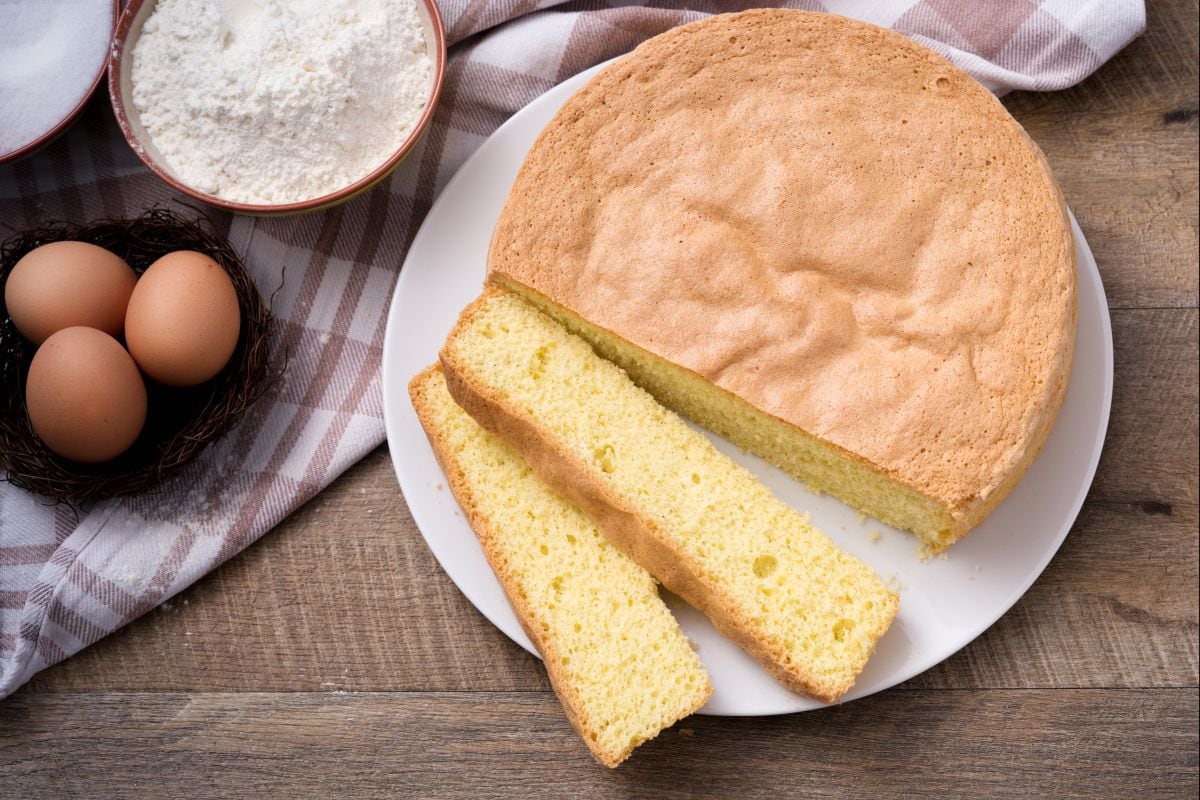Classic mimosa cake (Cake covered with sponge cake cubes)
- Difficult
- 1 h 30 min
- Kcal 519

Sponge cake is one of the basic preparations of Italian pastry-making that all those who love to bake have prepared at least once to give life to a wonderful birthday cake or to a dessert based on this soft preparation, such as zuccotto! It is a simple recipe, but often the simplest things in the kitchen require a lot of care to obtain a perfect result! The softness of the sponge cake with a typical honeycomb texture is due to the use of a low-protein flour so that the dough is not elastic. In addition, the use of starch that absorbs humidity will allow you to obtain an even softer cake. The sponge cake is a recipe that does not require the use of yeast, in fact the eggs must be whipped correctly to incorporate the air and develop bubbles that will enable the cake to rise. Also, you may not know that there are different varieties of this recipe: just think of the cocoa version, the gluten-free one, and even the savory one for parties and aperitifs! Furthermore, there are at least 5 methods to prepare sponge cakes: 2 hot, 2 cold and one with emulsifiers. While the procedures are different, the result does not change! And, as you know, we always use the simplest method to guarantee the best results even at home... with this recipe you will only dirty the stand mixer bowl! For special occasions, prepare the sponge cake filled with custard, pistachio cream or chocolate ganache, or to assemble a delicious trifle!

To prepare the sponge cake, break the eggs into the bowl of a stand mixer 1, then take the vanilla bean, cut it in half and remove the seeds 2 with the blade of a smooth knife. Add them to the eggs 3

with a pinch of salt 4. Then turn the stand mixer on at medium speed 5 and mix for about 15-20 minutes, adding the sugar a little at a time 6 for it to be absorbed well.

In the meantime, carefully grease and flour the 9.5” (24 cm) cake mold 7 and as soon as the mixture of eggs and sugar has become clear, fluffed up and frothy 8, turn off the machine. As an alternative to a stand mixer, you can use an electric beater. To understand if the mixture is ready, lift out a part and “write” on the rest of the mixture. It should create a clearly distinguishable thread without being absorbed. At this point, place a fine sieve on the bowl of the mixer and pour both the flour 9

and the potato starch 10 in the sieve. Sift the powders and mix everything with a hand whisk or a spatula making movements from the bottom up 11. Do this step very gently so as not to deflate the mixture. As soon as the powders are completely incorporated 12,

pour everything into the cake mold 13 and use a spatula to level the surface 15. At this point, it is essential not to beat the mold on the surface to level it, otherwise the mixture will deflate. Bake the sponge cake in a static oven preheated to 320°F (160°C) on the lowest rack for about 50 minutes. Avoid opening the oven during this time and before taking the cake out of the oven, check its readiness with the toothpick test since each oven is different. The toothpick must be completely dry when pulled out from the center of the cake. Once ready, take the sponge cake out of the oven 15.

Let the cake partially cool in the pan before removing it (16-17). Then let it cool completely on a wire rack before serving or filling it 18!